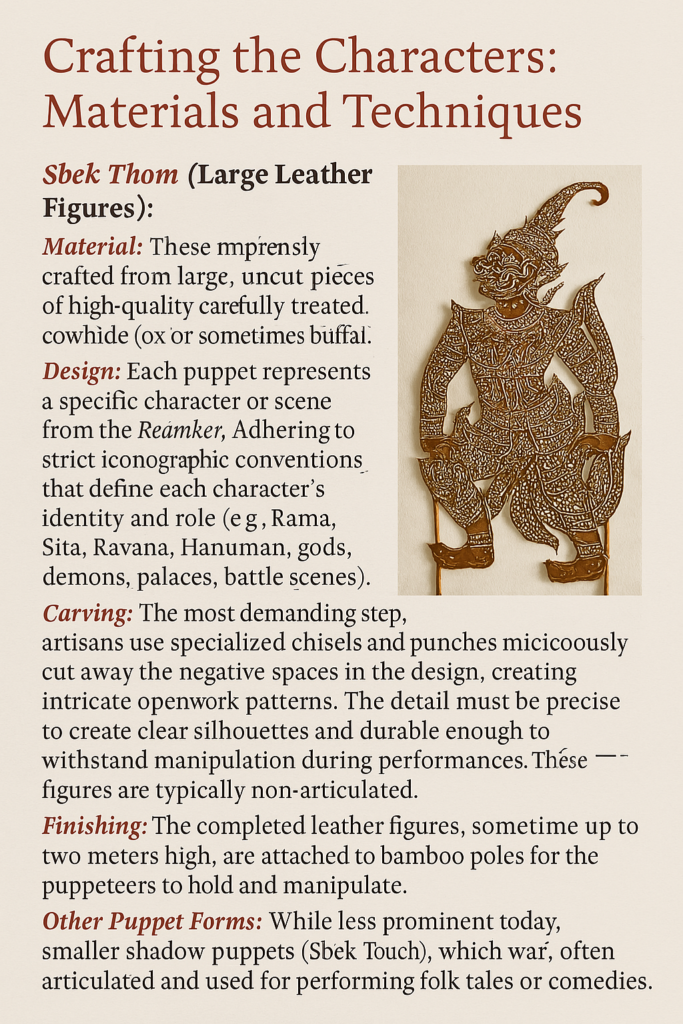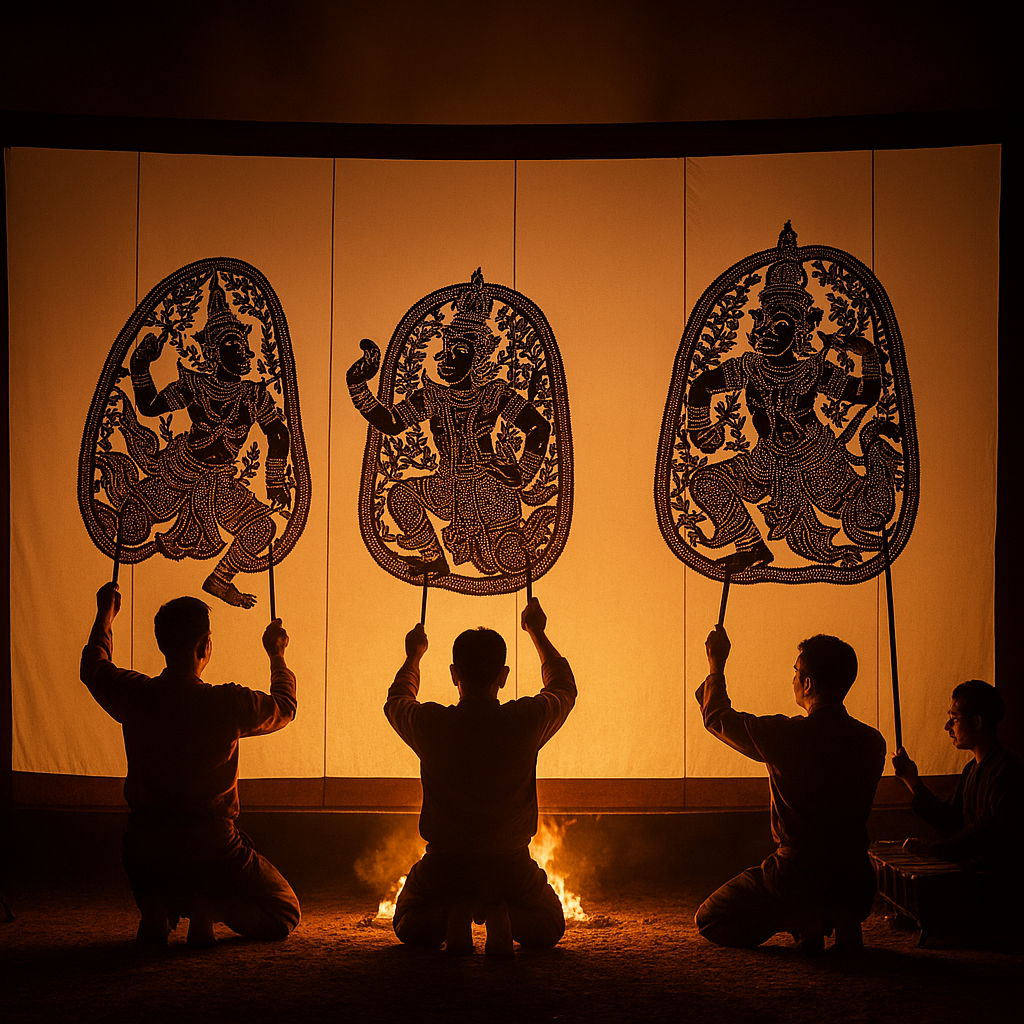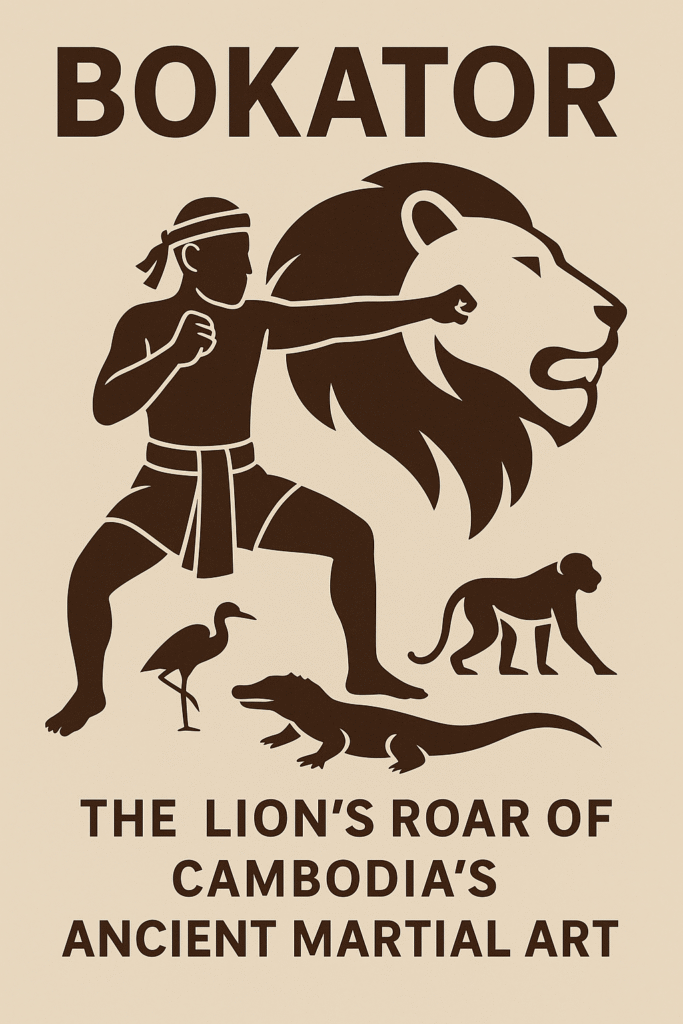Cambodia’s rich cultural tapestry includes vibrant performing arts, among which traditional puppetry (nang sbek) holds a unique and captivating place. More than mere entertainment, Khmer puppetry, especially the majestic large-format shadow puppetry known as Sbek Thom, is a deeply respected art form interwoven with storytelling, ritual, music, and intricate craftsmanship. Alongside this dramatic tradition exists the quieter, charming craft of handmade doll-making, together showcasing the diverse ways Cambodians have animated figures to tell stories, preserve traditions, and delight audiences.
Animating Myths: A History of Storytelling Through Puppets

The origins of puppetry in Cambodia likely stretch back centuries, potentially pre-dating the Angkorian era, although its forms evolved over time. Its primary historical role was as a powerful medium for storytelling in a predominantly oral culture. Before modern media, puppet troupes traveled communities, bringing epic narratives to life under the night sky. The most important story performed is the Reamker, the Khmer adaptation of the Indian Ramayana epic. Through puppets, audiences witnessed the battles between Prince Rama (Preah Ream) and the demon king Ravana (Krong Reap), the loyalty of Hanuman the monkey god, and the trials of Princess Sita (Neang Seda). These performances served not only as captivating entertainment but also as vehicles for transmitting cultural history, ethical values, and religious teachings embedded within the epics and Jataka tales (stories of the Buddha’s previous lives).
Crafting the Characters: Materials and Techniques

The creation of traditional Khmer puppets is a meticulous craft, particularly for the revered Sbek Thom:
- Sbek Thom (Large Leather Figures):
- Material: These impressive puppets are crafted from large, single, uncut pieces of high-quality cowhide (ox or sometimes buffalo), carefully treated for durability and translucency.
- Design: Each puppet represents a specific character or scene from the Reamker. Artisans sketch intricate designs directly onto the hide, adhering to strict iconographic conventions that define each character’s identity and role (e.g., Rama, Sita, Ravana, Hanuman, gods, demons, palaces, battle scenes).
- Carving: This is the most demanding step. Using specialized chisels and punches, artisans meticulously cut away the negative spaces in the design, creating intricate openwork patterns. The detail must be precise to create clear silhouettes and durable enough to withstand manipulation during performances. These figures are typically non-articulated.
- Finishing: The completed leather figures, sometimes measuring up to two meters high, are attached to bamboo poles for the puppeteers to hold and manipulate. They are usually left in their natural leather color.
- Other Puppet Forms: While less prominent today, Cambodia also had traditions of smaller shadow puppets (
Sbek Touch), which were often articulated and used for performing folk tales or comedies. Rod puppets or marionettes may have also existed but are less documented than the shadow forms.
Sacred Shadows: Sbek Thom in Religious Performance

Sbek Thom is not merely theatre; it is considered a sacred art form, deeply connected to religious ceremony and royal ritual. Its significance is recognized globally:
- UNESCO Recognition: In 2005, Sbek Thom was proclaimed by UNESCO as a Masterpiece of the Oral and Intangible Heritage of Humanity (inscribed officially in 2008).
- Performance Context: Traditionally, Sbek Thom performances are held outdoors at night, often on pagoda grounds or during major festivals like Khmer New Year, Pchum Ben, or coronations and royal birthdays. They are seen as offerings and are believed to bring blessings and ward off evil spirits.
- The Spectacle: A large white screen is erected, illuminated from behind by a bonfire or, more recently, electric lights. The skilled puppeteers dance and move behind the screen, manipulating the large, non-articulated leather figures to enact scenes from the Reamker. Their movements must be precise to convey the characters’ actions and emotions through silhouette alone. The performance is always accompanied by a traditional Pinpeat orchestra (comprising of xylophones, gong circles, drums, and oboe) and often features narrators or singers who chant the story. The overall effect is mesmerizing, deeply spiritual, and visually stunning.
Flickering Flames: Decline and Revival Efforts

Like many traditional Cambodian arts, Sbek Thom suffered immensely during the Khmer Rouge regime (1975-1979), with the loss of countless master artists and the destruction of precious puppet collections. In the decades since, it has faced ongoing challenges:
- Competition: Modern forms of entertainment capture the attention of younger audiences.
- Complexity & Cost: Sbek Thom requires a large troupe (puppeteers, musicians, narrators), expensive materials (large hides), specific performance conditions, and years of intensive training.
- Loss of Masters: Passing on the intricate knowledge and skills remains a critical concern.
Despite these hurdles, dedicated efforts to revive and sustain this art form are underway (as of April 2025):
- Organizations: Troupes and associations like Sovanna Phum Arts Association in Phnom Penh, Kok Thlok (which sometimes incorporates puppetry), and individual surviving masters work tirelessly to train new generations, create new puppets, perform regularly (often adapting shows to be shorter or more accessible), and raise awareness both locally and internationally.
- Documentation: Efforts are made to document the techniques, patterns, and stories associated with the art form.
These revival efforts are crucial for ensuring that the sacred shadows continue to dance.
Miniature Worlds: Handmade Khmer Dolls

While less prominent and formalized than the performing art of puppetry, doll-making also exists within Cambodian handicraft traditions.
- Craftsmanship: Traditionally, dolls were likely simple figures made by families for children’s play, possibly using cloth scraps, wood, clay, or woven natural fibers like palm leaf.
- Representation: Handmade dolls today often depict figures in traditional Khmer clothing, characters from rural life (farmers, fishermen), ethnic minority groups, or classical dancers.
- Modern Context: Many handmade dolls are now produced for the tourist souvenir market or through social enterprises supporting artisan livelihoods. They offer a charming, tangible representation of Cambodian culture and craft skills, distinct from the performance-oriented puppets.
Lessons in Light and Shadow: Educating Younger Generations

Traditional puppet shows, especially Sbek Thom, serve an important educational function:
- Transmitting Epics and History: They make complex narratives like the Reamker accessible and engaging for younger audiences, keeping these foundational stories alive.
- Moral and Ethical Instruction: The stories inherently contain lessons about good versus evil, loyalty, duty, compassion, and other Buddhist and cultural values.
- Cultural Immersion: Performances expose youth to traditional Khmer music (Pinpeat orchestra), visual arts (iconography and craftsmanship of the puppets), classical literature, and performance conventions.
- Inspiring Future Artists: Witnessing these captivating performances can inspire young Cambodians to appreciate and potentially pursue traditional arts. Revival groups often make efforts to perform for schools and community groups to foster this connection.
Animating Heritage

Cambodian puppetry, particularly the awe-inspiring Sbek Thom, stands as a unique and precious art form, blending intricate craftsmanship, dramatic performance, traditional music, epic storytelling, and profound spiritual meaning. Alongside the simpler craft of doll-making, it showcases the enduring human desire to animate figures and share stories. While facing challenges, the ongoing efforts to revive and sustain these traditions ensure that Cambodia’s shadows continue to tell their captivating tales. Experiencing a Sbek Thom performance, perhaps more commonly found in Phnom Penh or Siem Reap but occasionally touring or presented through local initiatives (even potentially near Battambang), offers an unforgettable glimpse into the soul of Khmer culture.


